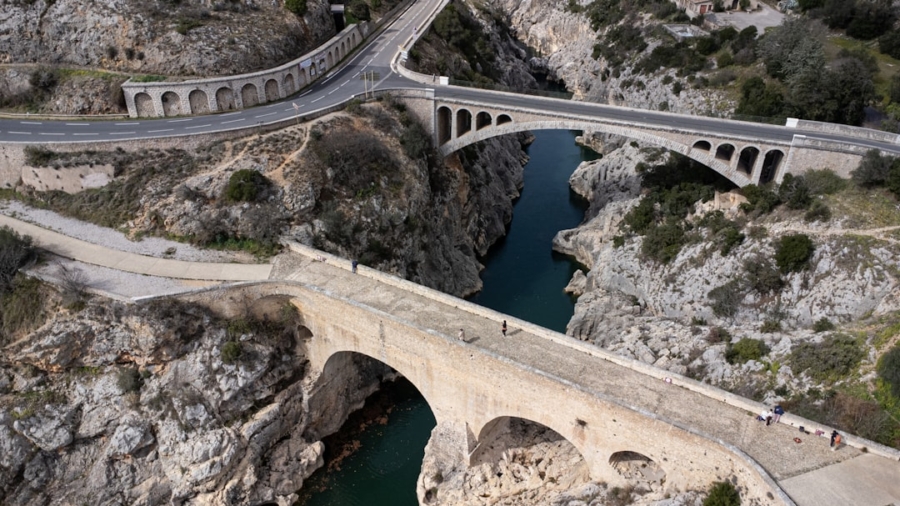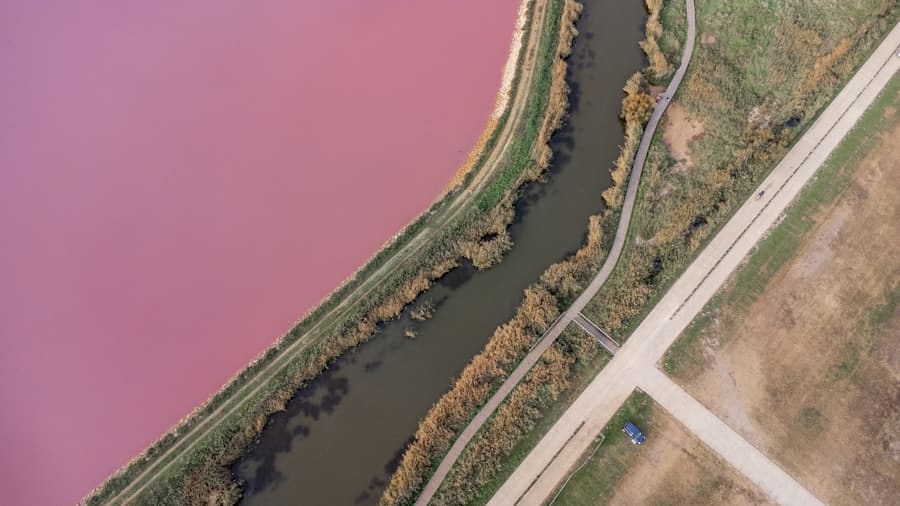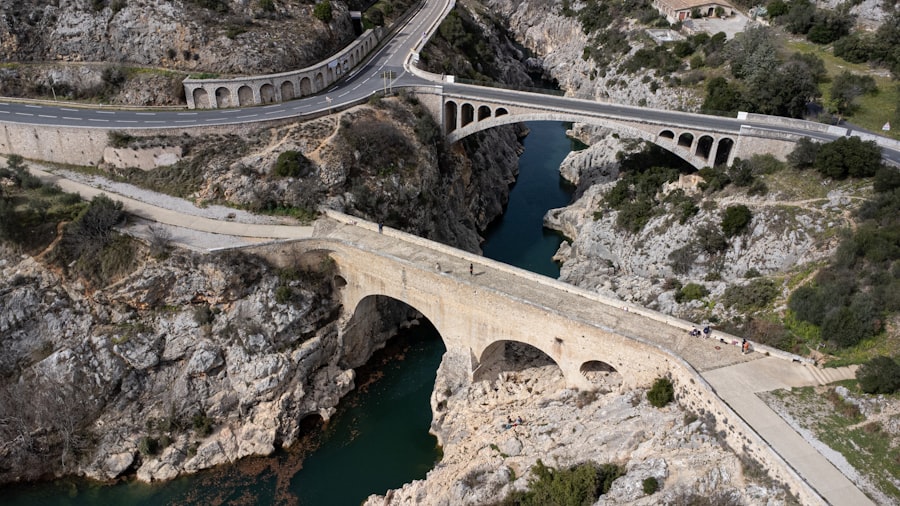The advent of drone technology has revolutionized various industries, and infrastructure inspections are no exception. Traditionally, inspecting large-scale infrastructure such as bridges, power lines, and pipelines required significant manpower, time, and resources. Inspectors often had to navigate challenging environments, sometimes putting themselves at risk to gather necessary data.
Drones, or unmanned aerial vehicles (UAVs), have emerged as a game-changing solution, offering a safer, more efficient, and cost-effective method for conducting these inspections. Equipped with high-resolution cameras and advanced sensors, drones can capture detailed imagery and data from angles and heights that would be difficult or impossible for human inspectors to reach. The integration of drones into infrastructure inspections not only enhances the quality of data collected but also accelerates the inspection process.
With the ability to cover vast areas in a fraction of the time it would take a human team, drones facilitate more frequent inspections, which is crucial for maintaining the integrity of critical infrastructure. As cities grow and infrastructure ages, the need for innovative inspection methods becomes increasingly pressing. Drones represent a significant advancement in this field, enabling stakeholders to monitor the condition of infrastructure more effectively and proactively address potential issues before they escalate into costly repairs or safety hazards.
Key Takeaways
- Drones have revolutionized infrastructure inspections by providing cost-effective and efficient solutions for large-scale projects.
- The use of drones for infrastructure inspections offers benefits such as improved safety, reduced costs, and faster data collection and analysis.
- Drones are used for various types of infrastructure inspections, including bridges, roads, railways, power lines, and pipelines, providing detailed and accurate data.
- Despite their advantages, challenges and limitations of using drones for infrastructure inspections include regulatory restrictions, limited flight time, and weather conditions.
- Case studies demonstrate the successful use of drones for infrastructure inspections, showcasing their ability to improve project efficiency and safety while reducing costs.
Benefits of Using Drones for Large-Scale Infrastructure Inspections
One of the most significant benefits of utilizing drones for infrastructure inspections is the enhanced safety they provide. Traditional inspection methods often require workers to climb to great heights or navigate hazardous environments, exposing them to potential accidents. Drones eliminate the need for personnel to be physically present in dangerous locations, thereby reducing the risk of injury or fatalities.
For instance, when inspecting tall structures like wind turbines or communication towers, drones can easily capture high-resolution images without putting human lives at risk. In addition to safety improvements, drones also offer remarkable efficiency in data collection. A drone can cover large areas quickly, capturing thousands of images in a single flight.
This rapid data acquisition allows for timely assessments and quicker decision-making processes. For example, a drone equipped with thermal imaging can quickly identify heat loss in buildings or detect electrical faults in power lines, enabling maintenance teams to address issues before they lead to system failures.
Types of Infrastructure Inspections Conducted with Drones
Drones are versatile tools capable of conducting a wide range of infrastructure inspections across various sectors. One prominent application is in the inspection of bridges. Drones can fly beneath bridge decks and capture high-resolution images of structural components that are often difficult to access.
This capability allows engineers to identify cracks, corrosion, and other signs of wear without the need for scaffolding or other costly access equipment. Another critical area where drones are making an impact is in the inspection of power lines and electrical infrastructure. Drones equipped with thermal imaging cameras can detect hotspots that indicate potential failures in electrical systems.
This proactive approach not only helps prevent outages but also enhances overall grid reliability. Similarly, in the oil and gas industry, drones are employed to inspect pipelines for leaks or damage. By using specialized sensors, drones can monitor vast stretches of pipeline quickly and efficiently, ensuring that any issues are identified and addressed promptly.
Challenges and Limitations of Using Drones for Infrastructure Inspections
Despite their numerous advantages, the use of drones for infrastructure inspections is not without challenges. One significant limitation is regulatory compliance. In many regions, drone operations are subject to strict regulations that govern flight altitude, airspace restrictions, and pilot certification requirements.
Navigating these regulations can be complex and may limit the operational flexibility of drone inspections. For instance, in urban areas where airspace is congested with manned aircraft, obtaining the necessary permissions for drone flights can be time-consuming and may delay inspection schedules. Another challenge lies in the technical limitations of drone technology itself.
While drones are equipped with advanced sensors and cameras, their performance can be affected by environmental conditions such as wind, rain, or low light. For example, high winds can make it difficult for drones to maintain stable flight during inspections, potentially compromising the quality of the data collected. Additionally, battery life remains a constraint; most commercial drones have limited flight times before needing to be recharged or replaced.
This limitation can hinder their ability to conduct extensive inspections without frequent interruptions.
Case Studies of Successful Drone Inspections on Large-Scale Infrastructure Projects
Several case studies illustrate the successful application of drones in large-scale infrastructure inspections. One notable example is the use of drones by the New York City Department of Transportation (NYCDOT) for bridge inspections. Faced with the challenge of inspecting over 700 bridges across the city, NYCDOT adopted drone technology to streamline its inspection process.
By utilizing drones equipped with high-resolution cameras, inspectors were able to capture detailed images of bridge components quickly and efficiently. This approach not only reduced inspection times but also improved the accuracy of assessments, allowing for better maintenance planning. Another compelling case study involves the use of drones by utility companies for inspecting power lines after severe weather events.
Following hurricanes or storms that cause widespread damage, utility companies often face immense pressure to restore power quickly. Drones have proven invaluable in these situations by providing rapid aerial assessments of damaged infrastructure. For instance, after Hurricane Harvey in 2017, utility companies deployed drones to assess damage across vast areas of Texas.
The drones enabled teams to identify downed power lines and damaged substations swiftly, facilitating faster repairs and minimizing downtime for affected customers.
Regulations and Safety Considerations for Drone Inspections
Regulatory Compliance: A Critical Aspect of Safe Operations
While regulatory compliance is essential, it is only one aspect of ensuring safe drone operations. Operational best practices are equally important and encompass a range of considerations. Conducting pre-flight checks, for example, is crucial to ensure that drones are in optimal working condition before embarking on an inspection mission.
Technical Proficiency and Data Interpretation
Drone operators must possess not only technical flying skills but also the ability to accurately interpret the data collected during inspections. This requires a deep understanding of the technology and its applications, as well as the ability to analyze and draw meaningful conclusions from the data.
Maximizing Benefits, Minimizing Risks
The combination of technical proficiency and regulatory knowledge is critical for maximizing the benefits of drone technology while minimizing the risks associated with its use. By prioritizing safety and adhering to best practices, drone operators can unlock the full potential of this technology and revolutionize the field of infrastructure inspections.
Future Trends in Drone Technology for Infrastructure Inspections
The future of drone technology in infrastructure inspections is poised for significant advancements as innovations continue to emerge. One promising trend is the integration of artificial intelligence (AI) and machine learning algorithms into drone systems. These technologies can enhance data analysis capabilities by automatically identifying anomalies or patterns within collected imagery.
Another exciting development is the potential for autonomous drone operations. As technology progresses, we may see drones capable of conducting inspections without direct human control.
These autonomous systems could follow pre-programmed flight paths and utilize onboard sensors to gather data independently. Such advancements would not only increase efficiency but also allow for continuous monitoring of infrastructure over time, enabling predictive maintenance strategies that could significantly reduce costs associated with repairs.
The Impact of Drones on Large-Scale Infrastructure Inspections
The integration of drones into large-scale infrastructure inspections has fundamentally transformed how these critical assessments are conducted. By enhancing safety, improving efficiency, and providing high-quality data collection capabilities, drones have become indispensable tools for engineers and inspectors alike. As technology continues to evolve and regulatory frameworks adapt to accommodate these innovations, we can expect even greater advancements in drone applications within this field.
The impact of drones extends beyond mere operational improvements; they represent a shift towards more proactive maintenance strategies that prioritize safety and reliability in infrastructure management. As cities grow and infrastructure demands increase, leveraging drone technology will be essential for ensuring that our critical systems remain functional and safe for public use. The future holds exciting possibilities as we continue to explore how drones can further enhance our ability to monitor and maintain the vital structures that support our daily lives.
A related article to How Drones Are Being Used for Large-Scale Infrastructure Inspections is Recode: A Technology News Website Owned by Vox Media. This article discusses how Recode provides in-depth coverage of the latest technology trends and news, making it a valuable resource for staying informed about the tech industry.
FAQs
What are drones used for in large-scale infrastructure inspections?
Drones are used to inspect large-scale infrastructure such as bridges, dams, power lines, and pipelines. They can capture high-resolution images and videos of the infrastructure, allowing inspectors to identify any potential issues or damage.
How do drones benefit large-scale infrastructure inspections?
Drones can access hard-to-reach areas of infrastructure, reducing the need for manual inspections that can be dangerous and time-consuming. They also provide a cost-effective and efficient way to gather data and monitor the condition of infrastructure.
What types of sensors are used on drones for infrastructure inspections?
Drones can be equipped with various sensors such as thermal cameras, LiDAR, and multispectral cameras. These sensors can provide valuable data on the structural integrity, temperature, and other important parameters of the infrastructure.
What are the challenges of using drones for large-scale infrastructure inspections?
Challenges include regulatory restrictions, weather conditions, and the need for skilled operators. Additionally, data management and analysis can be complex when dealing with large amounts of data collected by drones.
Are there any regulations or guidelines for using drones in infrastructure inspections?
Yes, there are regulations set by aviation authorities in different countries that govern the use of drones for commercial purposes, including infrastructure inspections. Operators must adhere to these regulations and obtain the necessary permits and licenses.



